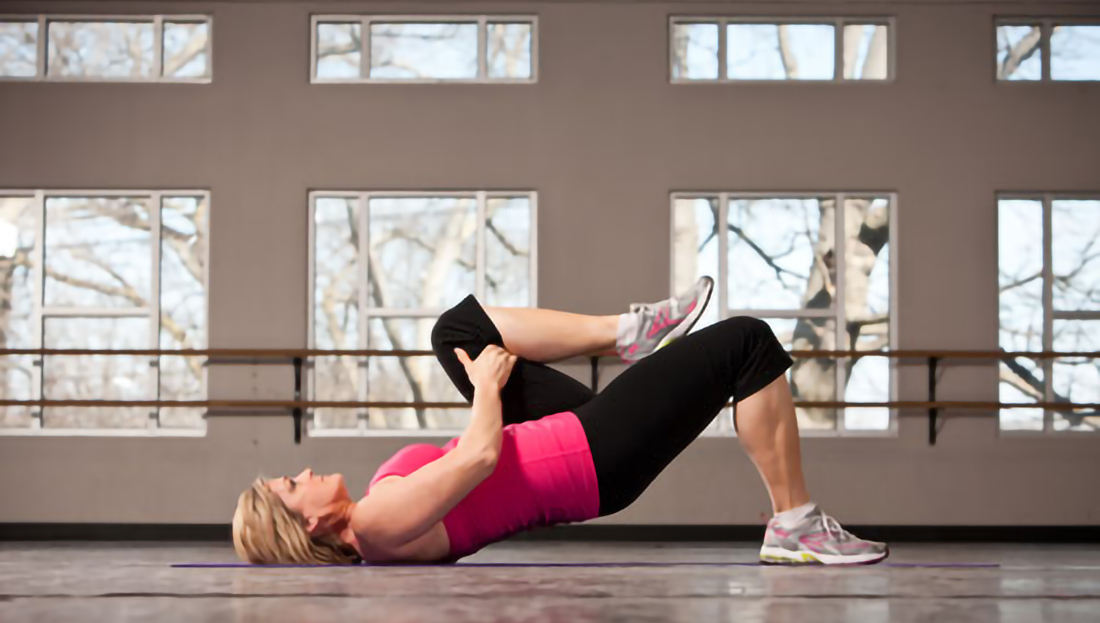
Ask a new client about his or her goals and the answer is often along the lines of, “lose weight and tone up.” Meeting the first goal is relatively straight forward—adhering to an exercise program to increase energy expenditure while following proper nutritional intake should result in weight loss. Addressing the second goal, however, requires educating your clients about what it really means to “tone up.”
Many fitness consumers who use the term “toning up” typically mean they want to enhance the definition in their muscles. First, it’s necessary to point out that tone is derived from the word “tonus,” which can be defined as “a state of partial contraction characteristic of normal muscle.” Second, there is no single clear-cut way to help someone enhance muscle tone, as each individual will have a different response to exercise based on his or her physiology.
As a health and exercise professional, you can explain that toning up is really about increasing strength and improving muscle definition, which can be achieved through a variety of training approaches (diet plays a role, too, of course); specifically, any approach must encourage a volume of exercise that is high enough to result in the muscle fibers remaining in a state of semi-contraction.
One approach to consider using with your clients is unilateral training. Unilateral refers to using only one arm or leg during an exercise. Bilateral refers to using both arms or legs at the same time; common bilateral exercises include the bench press, squat, shoulder press, leg press, lat pull-down and deadlift. While popular, many of these bilateral moves may not be as efficient as unilateral exercises when it comes to improving strength and, ultimately, enhancing definition.
Consider this: The human body largely functions while using one arm or leg at a time. Gait—the process of walking or running—could be considered the default pattern of human movement and is naturally unilateral. During gait, the body rapidly transitions from one leg to the next. The only time both feet are in contact with the ground at the same time is during the phases of heel strike, when the front foot is making contact with the ground, and early heel off, when the heel of the back foot is lifting off the ground; otherwise, walking (or running) occurs as the result of shifting the body’s weight from one leg to the other. While the body is transitioning from one leg to the other, the arms are swinging forward and back in opposition to the movement of the legs; when the right leg swings forward, the left arm is swinging forward and as the right leg transitions to extension the left arm is simultaneously moving backwards into extension. These motions are learned at a very early age and occur repeatedly on a subconscious, reflexive level (Green and Gabriel, 2018). Unilateral exercises take advantage of the inherent neurophysiology of the human body and learning how to incorporate these exercises into workout programs and group fitness classes could help clients and participants enhance muscular definition while becoming stronger.
The benefits of unilateral training are not limited to appearance, however. Performance coaches know the benefits of using unilateral exercises for helping athletes improve strength. Mike Boyle, the owner of the Body by Boyle studio in Woburn, Mass., and a strength coach who works with athletes of all skill levels including professional, is a proponent of unilateral training. “Single-leg training will promote greater muscle growth and greater muscle strength because it works more muscles,” explains Boyle. “Single-leg strength is specific and cannot be developed through double-leg exercises. Having only one foot in contact with the ground forces the hip structures, the abductors and external rotators to stabilize against movement both in the frontal and transverse planes" (Boyle, 2010).
Unilateral Training and the Central Nervous System
Strength training results in the central nervous system (CNS) becoming more efficient at stimulating muscles to produce force. The CNS communicates with a muscle via the motor unit, which is a motor neuron and the muscle fibers connected to it; when the motor neuron is activated, it signals the attached muscle fibers to contract and produce the force to generate movement. During an exercise, the CNS activates involved muscle fibers to produce the required force; the more the fibers are required to contract, the greater the chance of remaining in a state of semi-contraction, or tonus, once the exercise is complete.
Following the principle of specificity, which states that the body will adapt to the physical demands imposed upon it, one benefit of unilateral exercise is that it could help the CNS enhance motor-unit recruitment to increase the overall level of force production from the muscles involved in moving that limb. This helps explain why single-leg exercises such as lunges and step-ups are popular; using one leg at a time can cause localized fatigue, creating the perception that muscles are working harder. In this case, perception may actually be reality because research suggests that unilateral strength training can increase the firing rates of involved muscle motor units, which is important for both developing strength and enhancing muscular definition (Carrol et al., 2006).
Both Sides Become Stronger
It’s commonly accepted that unilateral training helps improve strength in the moving limb; however, research suggests that the CNS could be recruiting motor units in the opposite limb at the same time. Known as the “contralateral strength-training effect” or “cross education,” the phenomenon has been studied by numerous researchers who observed that unilateral strength training could cause a “spillover” of neural drive to the untrained side, resulting in a strength gain (Green and Gabriel, 2018; Cirer-Sastre, Baltran-Garrido and Corbi, 2017; Carrol et al., 2006). This means that as a client is using his or her right leg for a split squat or right arm for a one-arm row, the opposite leg or arm could also be getting stronger even while at rest. “Strong contraction of one limb affects the gain of the ipsilateral cortical circuitry that, with repeated execution, could induce adaptations in the 'untrained' control system to allow more effective motor drive when the untrained limb is maximally contracted” (Carrol et al., 2006).
Furthermore, according to Green and Gabriel (2018), “The changes in strength and neuromuscular adaptations were similar between the training and untrained limbs, providing support for the hypothesis that unilateral training induces adaptations of a motor center (such as the premotor cortex) that provides common drive to both hemispheres.”
Unilateral Training May Also Increase Core Strength
Losing weight is dependent, in part, on maximizing energy expenditure; muscles consume oxygen to produce energy and when more muscles are involved in a move, it increases the overall energy cost of that exercise. Designing an exercise program to perform as much work as possible during a class or client session can help move closer toward both goals of losing weight and increasing muscular definition. Using unilateral exercises not only can help increase muscle activation, but it may also be an efficient means of engaging the body’s core muscles while serving to increase overall energy expenditure.
Unilateral exercises may also increase the strength of the core muscles responsible for stabilizing the spine and pelvis. When the muscles of a single leg are used to generate the force for an exercise, other muscles are recruited to stabilize the rest of the body while that leg is working. Likewise, when only one arm is used for an exercise, the deep core stabilizers are recruited to create a solid foundation for that arm to move. Studies conducted by renowned researcher Stuart McGill, PhD, on unilateral movements such as suitcase carries, one-arm rows and one-arm presses suggest that using only one arm for pressing, pulling or carrying movements could help increase recruitment of spinal stabilizer muscles (McGill, 2010; McGill, McDermott and Fenwick, 2009; Santana, Vera-Garcia and McGill, 2007). “While laying,” writes McGill (2010), “bench press performance was primarily governed by the chest and shoulder musculature, where standing press performance was governed by core strength.”
In addition to the deep muscles that surround the spine, the core muscles that control movement of the pelvis are engaged to support the body during unilateral exercises. “Having only one foot in contact with the ground forces the hip structures, the abductors and external rotators, to stabilize against movement both in the frontal and transverse planes,” writes Boyle (2010). “The lateral subsystem consists of the gluteus medius [an abductor of the hip], the adductors and the quadratus lumborum. When we stand on one leg, as in a one-leg squat, we engage these three muscles that don’t get much use in a traditional two-leg squat.”
Designing Programs With Unilateral Exercises
Unilateral exercises activate the involved muscles necessary for helping clients to develop muscular definition, and, as the evidence suggests, they could be effective for strengthening numerous other muscles as well. Adding unilateral exercises to training sessions and group fitness classes can be achieved by following the ACE Integrated Fitness Training® (ACE IFT®) Model of exercise program design. Each phase of the ACE IFT Model allows for the use of unilateral exercises, with sample exercises presented in the table below.
When introducing unilateral exercises, start at an appropriate level of intensity and skill for the client or group fitness class. As the ability to control the body improves, increase the level of intensity. Although motor units in both limbs are being recruited, one limb is doing the majority of the work while the other is experiencing a rest interval, making it possible to switch from one side to the other with little to no rest.
While research can provide evidence of what is happening in the body during an exercise or how a particular exercise program could result in a specific outcome, there is no guarantee of results. Regardless of the desired outcome of an exercise program it is up to each individual client to perform the amount of work necessary to achieve that goal.
References
Boyle, M. (2010) Advances in Functional Training. Aptos, Calif.: On Target Publications.
Carrol, T. et al. (2006) Contralateral effects of unilateral strength training: Evidence and possible mechanisms. Journal of Applied Physiology, 101, 5, 1514−1520.
Cirer-Sastre, R., Beltran-Garrido, J. and Corbi, F. (2017) Contralateral effects after unilateral strength training: A meta-analysis comparing training loads. Journal of Sports Science and Medicine, 16, 2, 180−186.
Green, L. and Gabriel, D. (2018) The cross education of strength and skill following unilateral strength training in the upper and lower limbs. Journal of Neurophysiology, 120, 2, 468−479.
McGill, S.M. (2010) Core training: Evidence translating to better performance and injury prevention. Strength and Conditioning Journal, 32, 2, 33−46.
McGill, S.M., McDermott, A. and Fenwick, C. (2009) Comparison of different strongman events: Trunk muscle activation and lumbar spine motion, load and stiffness. Journal of Strength and Conditioning Research. 23, 4, 1148−1161.
Santana, J. C., Vera-Garcia, F. and McGill, S.M. (2007) A kinetic and electromyographic comparison of the standing cable press and bench press. Journal of Strength and Conditioning Research, 21, 4, 1271−1279.





 by
by 


